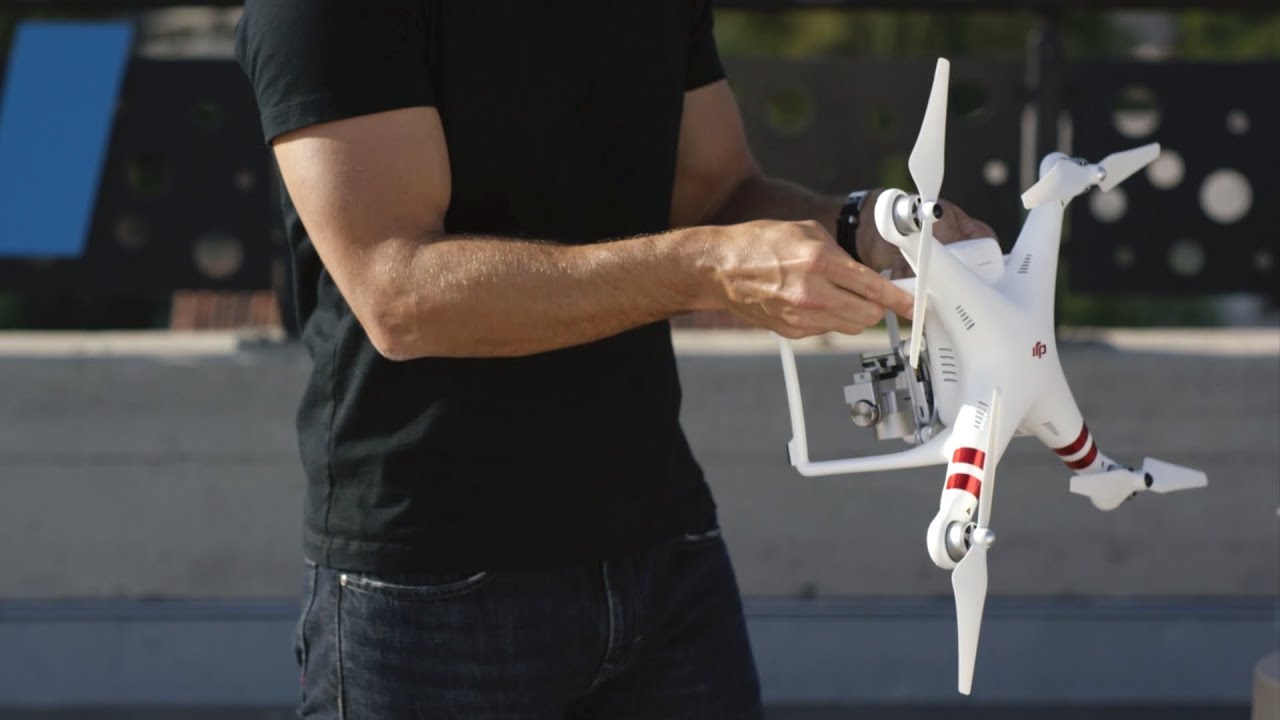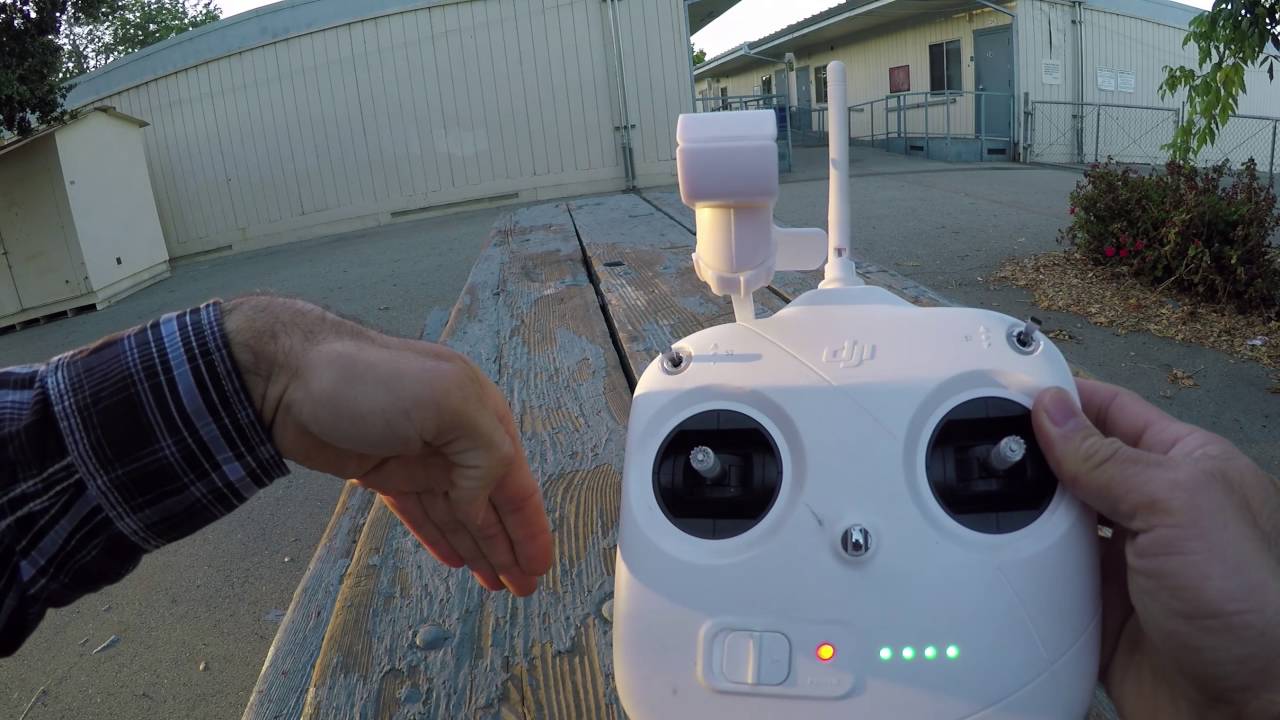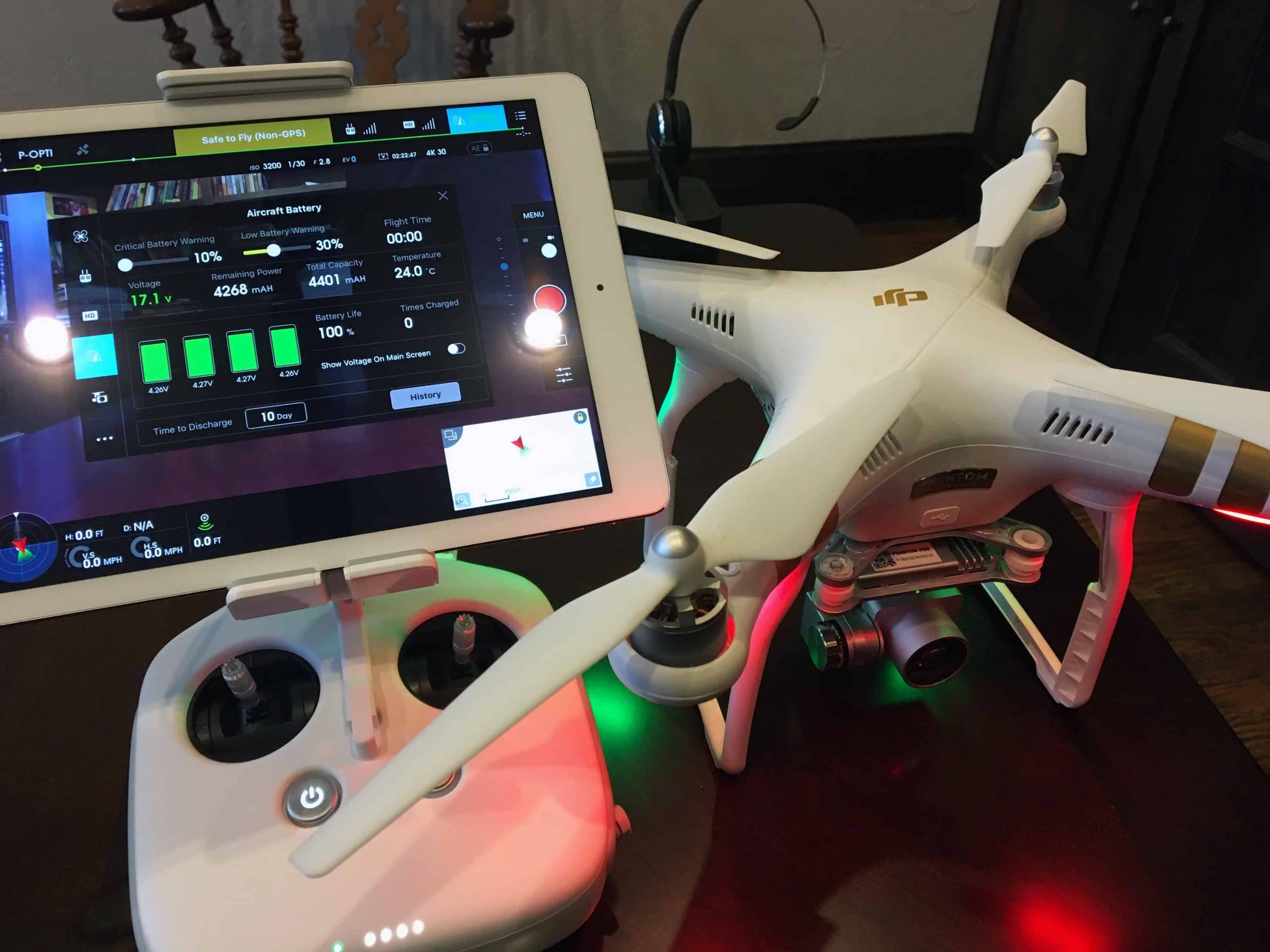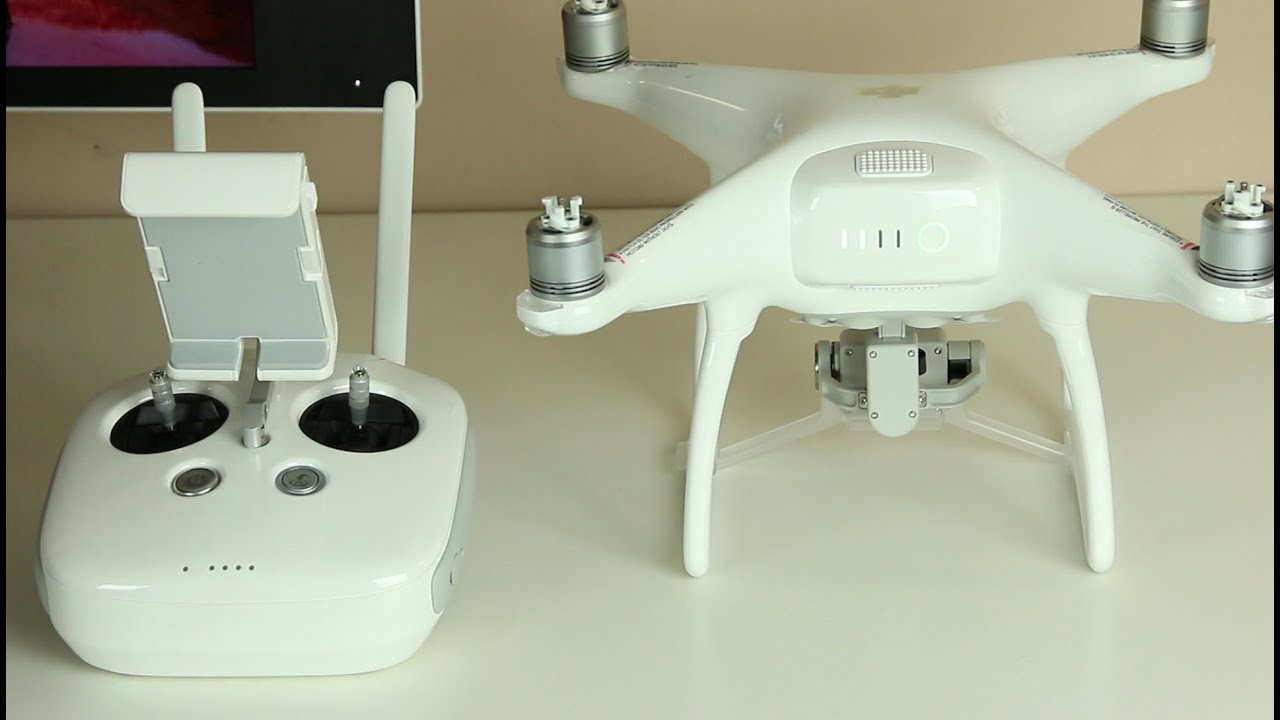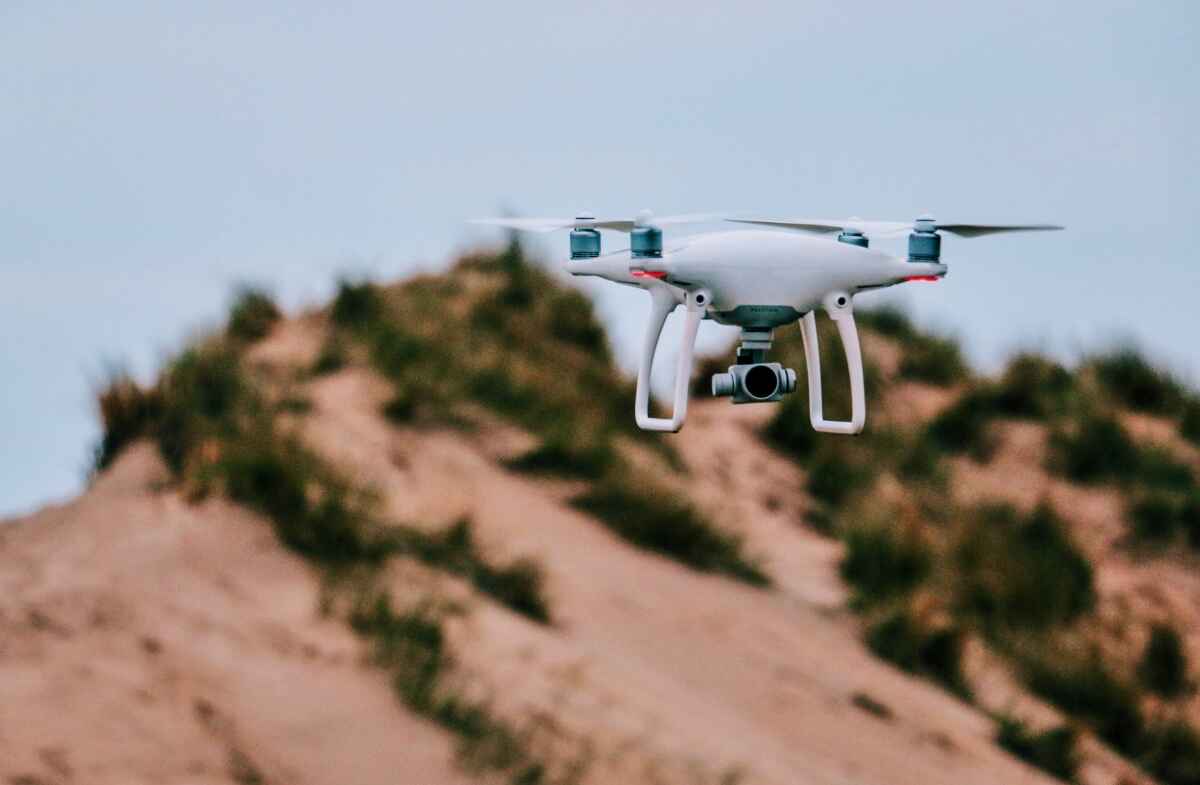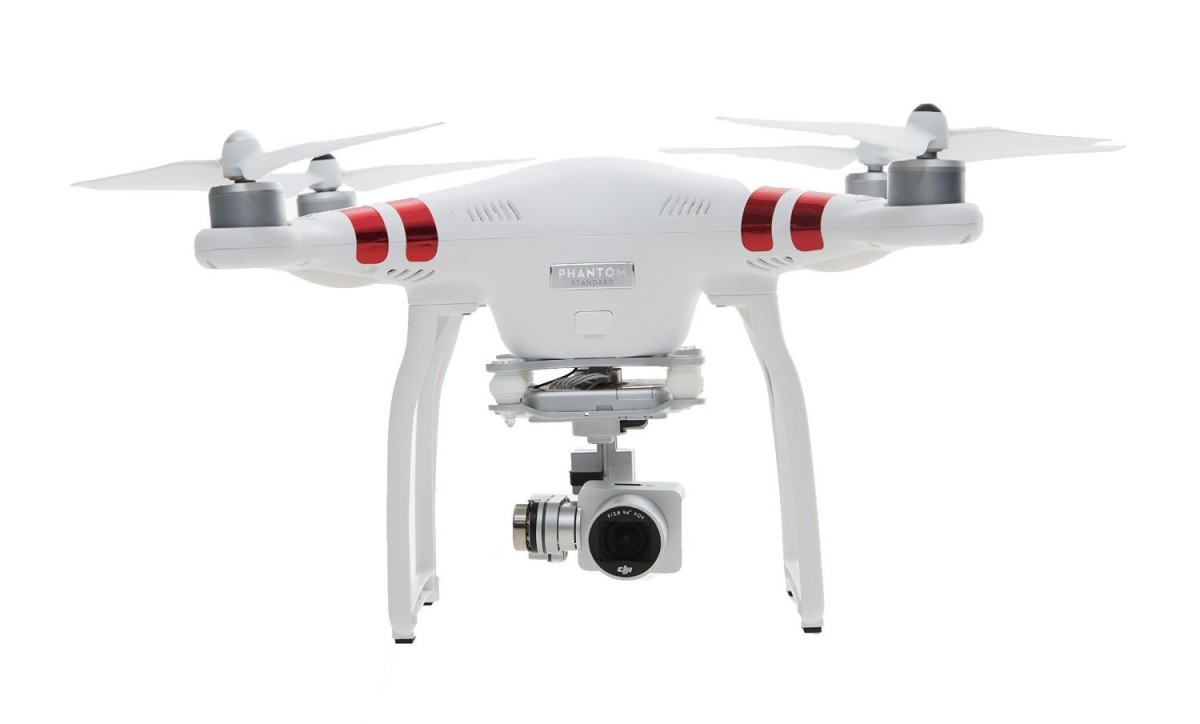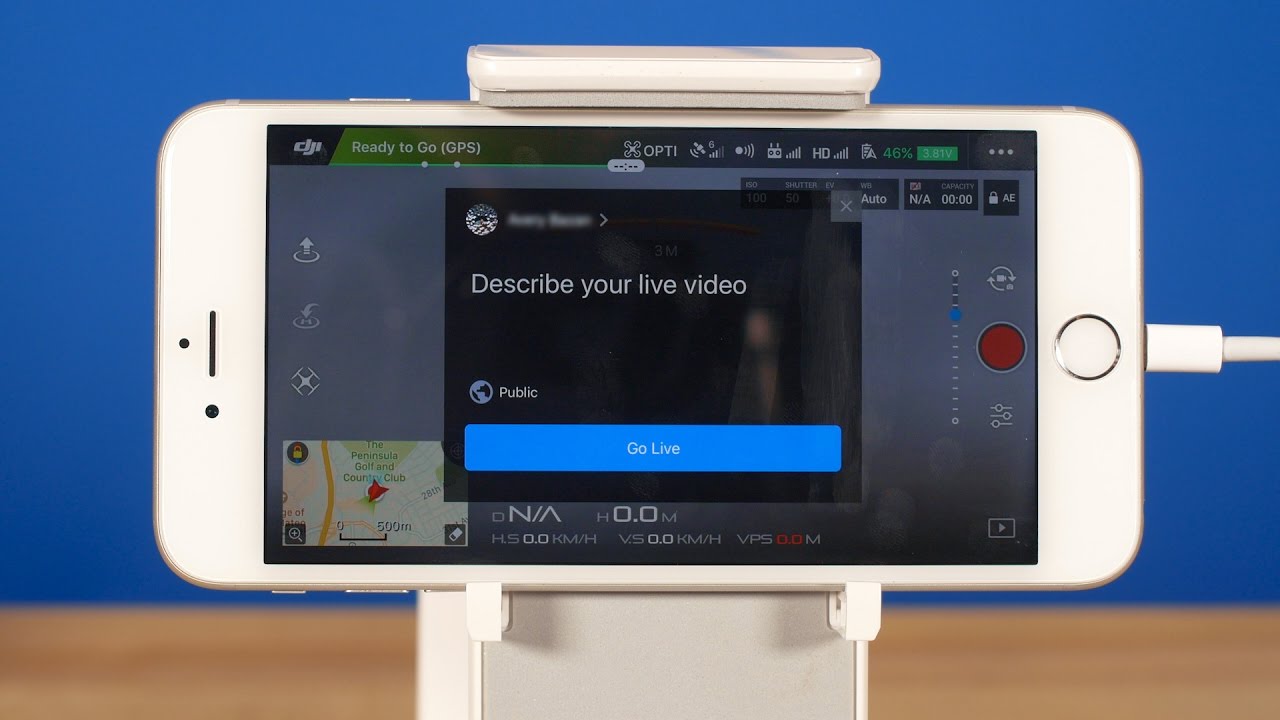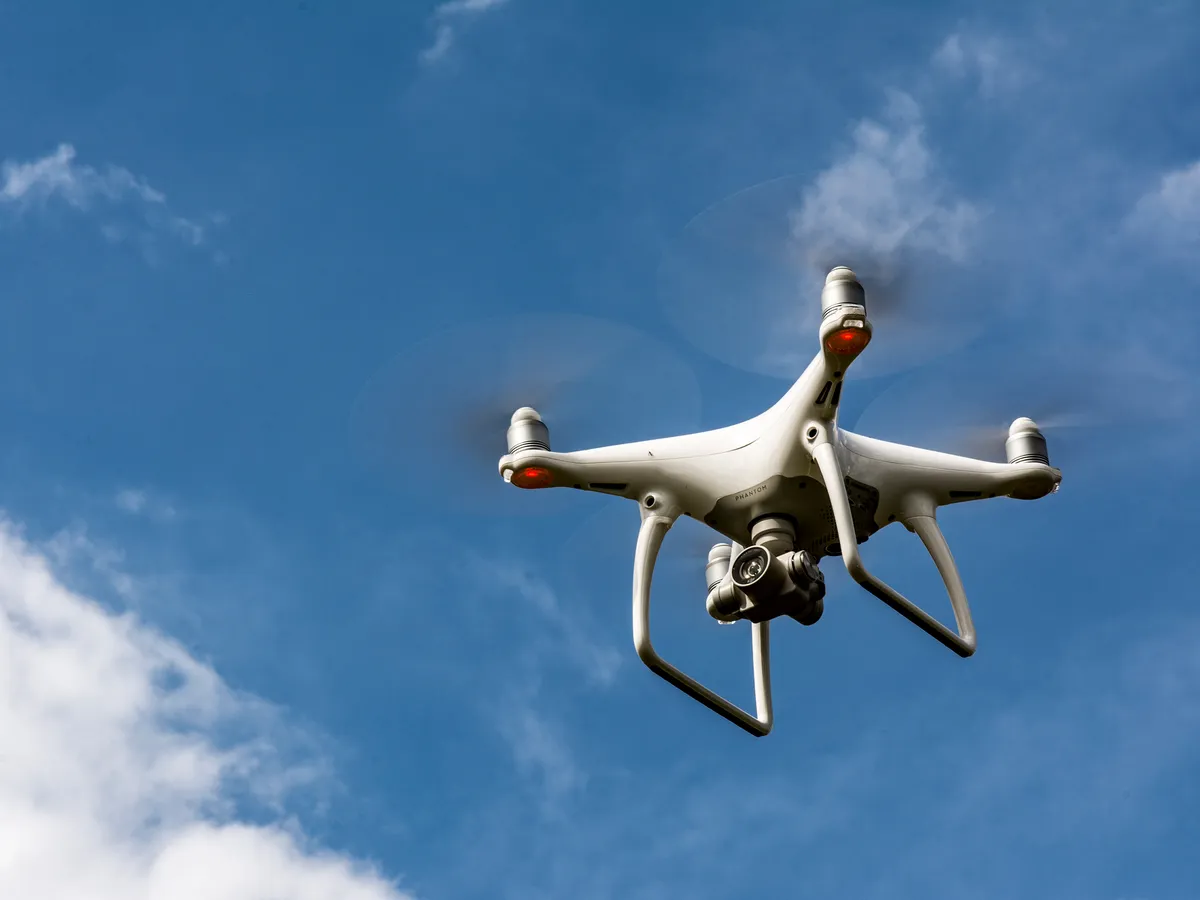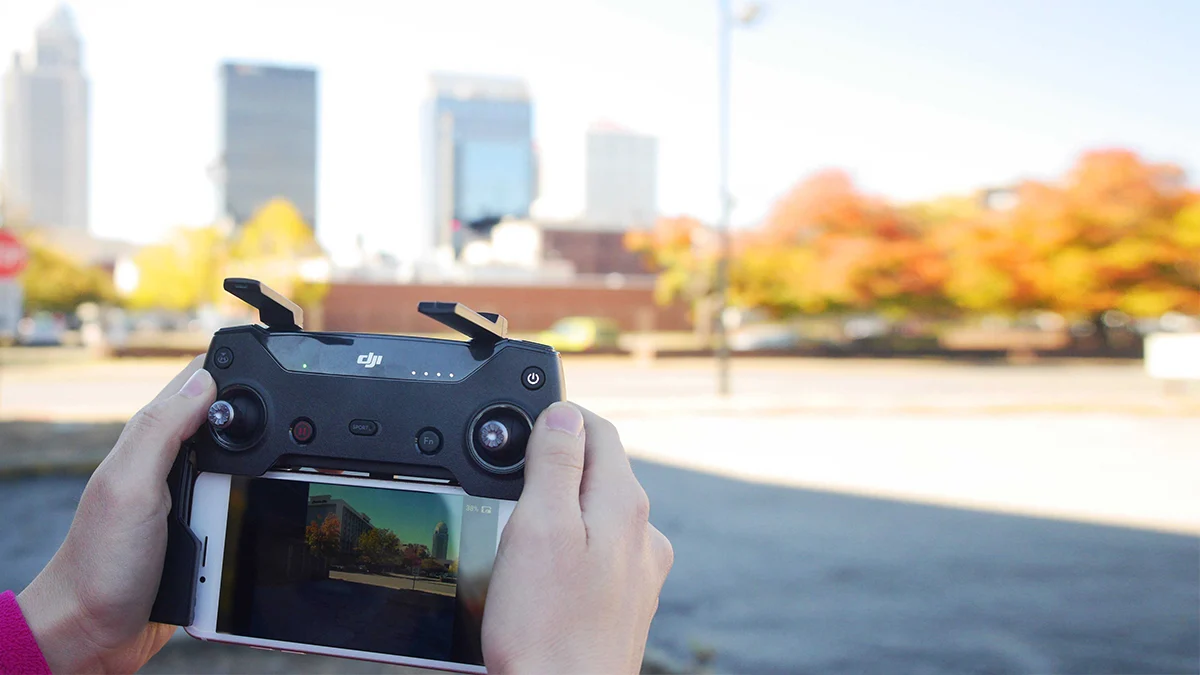Introduction
Calibrating the compass is an essential step for ensuring the accurate performance and stable flight of your DJI Phantom 3 drone. The compass is a vital component of the drone’s navigation system, helping it determine its orientation and maintain a steady course.
Without proper calibration, the compass readings may be inaccurate, leading to unexpected behavior during flight, such as drift or loss of control. As a result, it is crucial to calibrate the compass regularly, especially if you notice any issues with the drone’s flight performance or if you have recently relocated to a different area.
Fortunately, calibrating the compass of your DJI Phantom 3 is a simple process that can be done using the DJI Go app on your mobile device. In this guide, we will walk you through the necessary steps to calibrate the compass and ensure the optimal performance of your DJI Phantom 3 drone.
By following these steps, you can minimize the risk of interference and ensure that your drone maintains a stable hover and accurate flight path. So, without further ado, let’s dive into the process of calibrating the compass of your DJI Phantom 3 drone.
What is a compass?
A compass is a navigational instrument that aids in determining the direction or bearing relative to the Earth’s magnetic field. It consists of a magnetic needle or a magnetized card that aligns itself with the magnetic poles of the Earth.
In the case of a DJI Phantom 3 drone, the compass is an electronic sensor that measures the Earth’s magnetic field and provides crucial data for the drone’s flight control system. The compass enables the drone to determine its heading or direction, helping it navigate accurately and maintain a stable flight.
The compass works in conjunction with other sensors on the drone, such as GPS, to provide precise positioning information. By combining data from these sensors, the drone can calculate its relative position and maintain its intended flight path.
It is important to note that compasses can be affected by external magnetic interference. Objects such as metal structures, power lines, and electronic devices emit magnetic fields that can distort the compass readings, leading to inaccuracies in the drone’s navigation. This is why compass calibration is crucial to ensure accurate readings and reliable flight performance.
By calibrating the compass, you are essentially telling the drone’s flight control system what the correct magnetic reference is in the current environment. This allows the drone to compensate for any external magnetic influences, providing you with more accurate and stable flight operations.
Now that we have a better understanding of what a compass is and its role in the DJI Phantom 3 drone, let’s proceed to the next section, where we will explore why compass calibration is necessary.
Why is compass calibration necessary?
Compass calibration is necessary to ensure the accurate performance and reliable flight of your DJI Phantom 3 drone. Here are a few key reasons why compass calibration is essential:
1. Accurate Heading and Orientation: The compass provides the drone with information about its heading or direction. By calibrating the compass, you ensure that the drone’s readings are accurate, allowing it to maintain the correct orientation during flight.
2. Stable Hovering: Proper compass calibration helps the drone maintain a stable hover. When the compass is calibrated correctly, the drone can accurately counteract any external magnetic interference, resulting in a more stable and controlled hovering performance.
3. Precise GPS Integration: The compass is closely integrated with the drone’s GPS system. By calibrating the compass, you optimize the accuracy of GPS positioning, allowing the drone to maintain its intended flight path and follow waypoints accurately.
4. Avoidance of Drift: A poorly calibrated compass can lead to drift, where the drone gradually moves off its intended course. This can happen if the drone’s compass is not aligned with the Earth’s magnetic field properly. Compass calibration minimizes the risk of drift and ensures that the drone maintains a steady flight path.
5. Minimizing Interference: External factors such as metal structures, power lines, and electronic devices can create magnetic interference, affecting the compass’s readings. By calibrating the compass, you teach the drone how to compensate for these external magnetic influences, reducing the risk of interference and enhancing flight stability.
6. Reliable RTH (Return-to-Home) Function: In the event of poor GPS signal or loss of connection, the Return-to-Home function relies on accurate compass readings to guide the drone back to its takeoff point. Proper compass calibration ensures that the drone can navigate accurately and safely return home in challenging situations.
Overall, compass calibration is necessary to maintain the optimal performance, stability, and reliability of your DJI Phantom 3 drone. It ensures accurate heading, stable hovering, precise GPS integration, avoidance of drift, minimization of interference, and a reliable Return-to-Home function.
Now that we understand the importance of compass calibration, let’s move on to the next section to explore the step-by-step process of calibrating the DJI Phantom 3 compass.
Steps to Calibrate the DJI Phantom 3 Compass
Calibrating the compass of your DJI Phantom 3 is a straightforward process that can be done using the DJI Go app. Follow these step-by-step instructions to ensure accurate compass calibration:
- Step 1: Find a suitable location: Choose an outdoor location away from any potential sources of magnetic interference, such as metal structures, power lines, or electronic devices.
- Step 2: Turn on the DJI Phantom 3: Power on your drone and remote controller, ensuring that they are connected and in range. Wait for the DJI Go app to establish a stable connection with the drone.
- Step 3: Access the DJI Go app: Open the DJI Go app on your mobile device and navigate to the main screen, where you can access various settings and flight modes.
- Step 4: Enter the calibration mode: Go to the “Settings” menu within the DJI Go app and locate the “Sensor Calibration” option. Select “Calibrate Compass” to enter the calibration mode.
- Step 5: Follow the on-screen instructions: The DJI Go app will guide you through the calibration process on the screen. Pay close attention to the instructions provided and follow them carefully.
- Step 6: Rotate the DJI Phantom 3: To calibrate the compass, you will need to physically rotate the drone in a specific manner. Follow the on-screen instructions and rotate the drone as directed, ensuring smooth and controlled movements.
- Step 7: Complete the calibration process: Once you have successfully rotated the drone according to the instructions, the DJI Go app will indicate that the calibration process is complete. You can now exit the calibration mode and proceed with your flight.
It is important to note that compass calibration should be done whenever you notice any issues with your drone’s flight performance or when you change your flying location significantly.
Remember to always follow the instructions provided by the DJI Go app during the calibration process. It is vital to ensure that the drone is on a level surface, free from any interference, and that you rotate it smoothly and in the correct direction as specified.
Now that you know the steps to calibrate the DJI Phantom 3 compass, let’s move on to the next section for some useful tips and tricks to enhance your compass calibration experience.
Step 1: Find a Suitable Location
Choosing an appropriate location is the first step in calibrating the compass of your DJI Phantom 3 drone. Here’s what you need to consider:
1. Outdoor Environment: Perform the compass calibration process in an outdoor environment. This ensures a clear line of sight and reduces the chance of magnetic interference from indoor structures, such as metal objects or electronic devices.
2. Open Space: Select an open space with ample room for the drone to rotate freely. Avoid locations with obstacles like trees, buildings, or power lines that could obstruct the movement of the drone during calibration.
3. Minimal Magnetic Interference: Stay away from sources of magnetic interference, such as metal fences, vehicles, or underground cables. These objects can disrupt the accuracy of the compass readings, leading to improper calibration.
4. Level Ground: Ensure that the ground is level and stable. Performing the calibration on uneven terrain may affect the accuracy of the drone’s readings. Find a flat surface, such as a field or a paved area, to ensure reliable calibration results.
5. Away from Electromagnetic Fields: Keep a safe distance from high-voltage power lines, radio towers, or any other strong sources of electromagnetic fields. These can interfere with the magnetic sensor and introduce errors into the calibration process.
6. Away from Metallic Objects: Avoid calibrating the compass near large metal structures or objects, as they can distort the magnetic field readings. This includes bridges, metal fences, and even your own vehicle. Choose a location that is free from significant metallic interference.
By finding a suitable location that meets these criteria, you set the stage for a successful compass calibration process. It is important to note that the accuracy of the calibration greatly depends on the quality of the chosen location.
Remember, finding the right location for compass calibration is crucial for obtaining reliable and accurate compass readings. Now that you have identified a suitable location, let’s move on to the next step of the calibration process: turning on the DJI Phantom 3 drone.
Step 2: Turn on the DJI Phantom 3
Turning on the DJI Phantom 3 drone is the second step in the compass calibration process. Here’s what you need to do:
- Ensure that both the drone and the remote controller are powered off before starting the calibration process.
- Place the drone on a flat and level surface, free from any obstructions, such as grass, sand, or concrete.
- Insert the fully charged intelligent flight battery into the battery compartment of the drone.
- Press the power button once and hold it for a few seconds until you see the lights on the drone and the remote controller begin to flash.
- Wait for the drone to finish its startup initialization process. This typically takes a few seconds.
- Ensure that both the drone and the remote controller are connected to each other. You can check the connection status on the DJI Go app or by observing the LED indicators on the drone and the remote controller.
It is crucial to ensure that the drone and the remote controller are properly connected and in range before proceeding with the compass calibration. A stable and reliable connection is necessary for the calibration process to be successful.
Remember to follow the manufacturer’s guidelines for turning on and powering off your DJI Phantom 3 drone. Adhering to these instructions will help ensure the safety of your equipment and a smooth calibration process.
Now that you have turned on your DJI Phantom 3 drone, it’s time to move on to the next step: accessing the DJI Go app on your mobile device.
Step 3: Access the DJI Go App
Accessing the DJI Go app on your mobile device is the third step in the compass calibration process for your DJI Phantom 3 drone. Here’s how you can do it:
- Ensure that your mobile device is charged and connected to the internet. The DJI Go app requires an internet connection to function properly.
- Unlock your mobile device and locate the DJI Go app on your home screen or in your app drawer.
- Tap on the DJI Go app icon to launch the application.
- Wait for the DJI Go app to load and establish a stable connection with the drone.
- If prompted, log in to your DJI account or create a new account if you haven’t already done so. This step may not be necessary if you have previously logged in and selected the “Remember Me” option.
- Once you have successfully logged in, you should see the main screen of the DJI Go app, which displays essential flight information and various settings.
It is crucial to ensure that your mobile device is compatible with the DJI Go app. Check the official DJI website or the app store to verify the device compatibility before proceeding with the compass calibration process.
The DJI Go app provides a user-friendly interface for accessing and controlling your DJI Phantom 3 drone. It offers a range of features, including flight control, camera settings, and compass calibration.
Now that you have accessed the DJI Go app on your mobile device, you are ready to move on to the next step: entering the calibration mode.
Step 4: Enter the Calibration Mode
To calibrate the compass of your DJI Phantom 3 drone, you need to enter the calibration mode in the DJI Go app. Follow these steps to enter the calibration mode:
- Ensure that the DJI Go app is open and running on your mobile device.
- From the main screen of the DJI Go app, locate the settings icon. This is typically represented by a gear or a three-dot symbol and can usually be found in the top or bottom right corner of the screen.
- Tap on the settings icon to access the settings menu.
- Scroll through the settings menu until you find the option for “Sensor Calibration.”
- Select “Sensor Calibration” to enter the calibration mode.
Once you have entered the calibration mode, you will have access to various calibration options, including compass calibration. It is important to follow the on-screen instructions provided by the DJI Go app while calibrating the compass.
Make sure to read and understand the instructions thoroughly before proceeding with the calibration. The app will guide you through the calibration process step by step, ensuring that you perform the necessary actions accurately.
Remember to remain patient and focused during the calibration process. Rushing or performing the calibration incorrectly may lead to inaccurate results and potentially affect the performance of your DJI Phantom 3 drone.
Now that you have entered the calibration mode in the DJI Go app, it’s time to move on to the next step: following the on-screen instructions for compass calibration.
Step 5: Follow the On-Screen Instructions
Once you have entered the calibration mode in the DJI Go app, it’s time to follow the on-screen instructions for compass calibration. Here’s what you need to do:
- Pay close attention to the on-screen instructions provided by the DJI Go app. Read each instruction carefully to understand the steps required for accurate compass calibration.
- Follow the step-by-step process outlined by the app. The instructions may involve specific actions such as rotating the drone or tilting it in certain directions.
- Ensure that you perform the actions smoothly and in accordance with the instructions. Avoid any abrupt movements or jerks that may affect the accuracy of the calibration process.
- Take your time to complete each step of the on-screen instructions. Rushing through the process may lead to errors or incomplete calibration.
- Keep an eye on the progress indicators provided by the DJI Go app. These indicators will guide you through the different stages of the calibration process and inform you of the progress made.
It is important to note that the on-screen instructions may vary depending on the specific model of your DJI Phantom 3 drone and the version of the DJI Go app you are using. Therefore, ensure that you are using the latest version of the app and consult the official DJI documentation or support if you encounter any difficulties during the calibration process.
By diligently following the on-screen instructions provided by the DJI Go app, you can ensure accurate and reliable compass calibration for your DJI Phantom 3 drone.
Now that you understand the importance of following the on-screen instructions, let’s move on to the next step, which involves rotating the DJI Phantom 3 drone.
Step 6: Rotate the DJI Phantom 3
In this step, you will be required to physically rotate the DJI Phantom 3 drone as instructed by the DJI Go app. Follow these guidelines to ensure accurate compass calibration:
- Pay close attention to the on-screen instructions provided by the DJI Go app. It will guide you through the process of rotating the drone.
- Hold the drone firmly and begin rotating it as indicated by the app. The app will specify the direction and speed at which you should rotate the drone for calibration.
- Make sure to rotate the drone smoothly and steadily. Avoid any sudden or jerky movements that may disrupt the calibration process.
- Keep an eye on the progress indicators provided by the DJI Go app. It will show you the status of the calibration process as you rotate the drone.
- Continue rotating the drone until the app prompts you to stop. This indicates that the calibration process for that particular stage is complete.
- If necessary, the app may instruct you to perform additional rotations or movements in different directions to ensure comprehensive calibration.
It is crucial to follow the on-screen instructions provided by the DJI Go app precisely during the rotation process. Incorrect or incomplete rotations may result in inaccurate compass calibration.
Remember to maintain a steady grip on the drone while rotating it and to follow the guidance provided by the app. This step ensures that the drone’s compass aligns itself accurately with the Earth’s magnetic field.
Once you have completed the required rotations as instructed by the DJI Go app, you are ready to move on to the final step of the compass calibration process.
Now that you have successfully rotated the DJI Phantom 3 drone, let’s proceed to the next and final step: completing the calibration process.
Step 7: Complete the Calibration Process
After following the on-screen instructions and rotating the DJI Phantom 3 drone, it’s time to complete the calibration process. Here’s what you need to do:
- Follow the final on-screen instructions provided by the DJI Go app.
- Once you have completed the required rotations, the app will indicate that the calibration process is complete.
- Take a moment to ensure that you have followed all the steps accurately, and that the DJI Go app has displayed a successful calibration message.
- Exit the calibration mode by following the instructions given by the app or by navigating back to the settings menu.
- Confirm that you have exited the calibration mode and return to the main screen of the DJI Go app.
- Verify that the compass calibration status is displayed as successful or calibrated on the app’s interface.
Once the calibration process is complete and the DJI Go app indicates a successful calibration, your DJI Phantom 3 drone is now calibrated and ready for flight.
It is important to note that if the DJI Go app indicates an unsuccessful calibration or if you encounter any issues during the process, it is recommended to repeat the calibration process, ensuring that you follow the instructions accurately and perform the rotations smoothly.
Remember that compass calibration should be performed regularly, especially if you notice any abnormal flight behavior or if you have recently relocated to a different area. Regular calibration helps maintain accurate compass readings and ensures optimal performance during flight.
Congratulations! You have successfully completed the compass calibration process for your DJI Phantom 3 drone.
Now that your DJI Phantom 3 drone is calibrated, you can enjoy confident and stable flights. It’s time to put your drone to use and explore the exciting possibilities it offers in capturing breathtaking aerial views and capturing amazing footage.
Tips and Tricks for Compass Calibration
Compass calibration is an important step to ensure the accurate performance of your DJI Phantom 3 drone. Here are some useful tips and tricks to enhance your compass calibration experience:
- Choose the right time: Perform the compass calibration during a time when there is minimal magnetic interference. Avoid calibrating in the presence of strong electromagnetic fields, as it can impact the accuracy of the calibration process.
- Calibrate outdoors: Always perform the compass calibration process in an outdoor environment away from metallic structures, power lines, and electronic devices. This will reduce the chances of magnetic interference affecting the calibration results.
- Avoid nearby objects: When calibrating, ensure that the drone is at least 10 feet away from any nearby metallic objects, including your own body, as they can influence the magnetic field readings and compromise the accuracy of the calibration.
- Follow the on-screen instructions: Pay close attention to the on-screen instructions provided by the DJI Go app. Follow each step carefully and perform the required rotations or movements as directed to ensure accurate calibration results.
- Perform a compass dance: If you encounter any issues during the calibration process, try performing a “compass dance.” This involves rotating the drone in a figure-eight motion to recalibrate the compass. This technique can help resolve minor calibration errors.
- Calibrate after travel: If you have recently traveled a significant distance or changed your flying location, it is recommended to perform a compass calibration. This ensures that the drone adjusts to the magnetic field of the new location, resulting in more accurate readings.
- Regularly check calibration: Periodically check the compass calibration status in the DJI Go app to ensure that it remains accurate. If you notice any issues with flight performance or inconsistency in the compass readings, recalibrate the compass to rectify any potential errors.
- Keep firmware updated: Ensure that your drone’s firmware, as well as the DJI Go app, is up to date. Updated firmware can include enhancements and improvements that can enhance the compass calibration process and overall drone performance.
- Practice patience and consistency: Compass calibration may require multiple attempts to achieve accurate results, especially if you are in an area with strong magnetic interference. Remain patient, follow the instructions consistently, and aim for smooth and steady movements during calibration.
By following these tips and tricks, you can optimize the compass calibration process for your DJI Phantom 3 drone and ensure stable and accurate flight performance.
Remember, the calibration process is critical to maintaining reliable navigation and ensuring that your drone operates safely and accurately. By taking the necessary precautions and adhering to the recommended guidelines, you can make the most out of your DJI Phantom 3 drone experience.
Now that you are equipped with these tips and tricks, go ahead and confidently calibrate the compass of your DJI Phantom 3 drone for smooth and accurate flights!
Conclusion
Calibrating the compass of your DJI Phantom 3 drone is an essential step to ensure accurate performance, stable flight, and reliable navigation. By following the steps outlined in this guide and paying attention to the tips and tricks provided, you can optimize the compass calibration process and enhance your overall flying experience.
Remember to find a suitable location that is free from magnetic interference and perform the calibration process outdoors. Take the time to carefully follow the on-screen instructions provided by the DJI Go app, and ensure smooth and controlled movements when rotating the drone.
Regularly calibrating the compass is recommended, especially after traveling significant distances or relocating to a new flying location. By maintaining accurate compass readings, you can enjoy stable hovering, precise GPS integration, minimized interference, and a reliable Return-to-Home function.
Throughout the calibration process, keep in mind the importance of patience and consistency. It may take a few attempts to achieve the desired calibration results, especially in areas with strong magnetic interference. But with persistence and careful adherence to the instructions, you can achieve accurate calibration and optimal flight performance.
Lastly, be sure to check for firmware updates for both your drone and the DJI Go app. These updates may contain important enhancements that can further improve the calibration process and overall drone performance.
With a properly calibrated compass, you can confidently explore the world from above with your DJI Phantom 3 drone, capturing stunning aerial views and immersing yourself in the exhilarating world of aerial photography and videography.
So, take the time to calibrate your DJI Phantom 3 compass, follow the guidelines provided, and enjoy the thrilling and smooth flight experience that awaits you!







